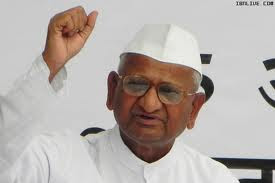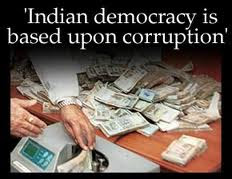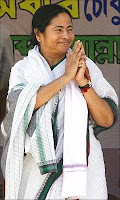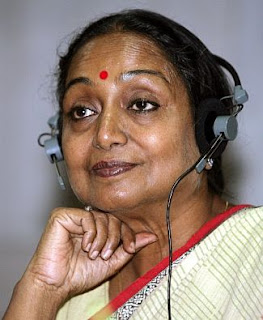
FOOD for THOUGHT
Mahatma Gandhi adopted ‘Satyagraha’ as the modus operandi of his political and social action against the British rulers in the fight for independence and also sometimes political and communal causes like the ‘fast unto death’ against the ‘communal award’ resulting in the Poona Pact in 1932 with Dr. B.R. Ambedkar and ‘Satyagraha’ at the time of partition of India in 1947 and so on. India got its independence on August 15, 1947. Mahatma Gandhi was assassinated by Nathu Ram Godse, a fanatic and fundamentalist. India adopted its constitution and became a Republic on January 26, 1950. The whole scenario got changed giving way to democracy as against civil disobedience, non-cooperation or ‘Satyagraha’.Dr. B.R. Ambedkar, the father of the Indian constitution, referred the change in his last speech in the Constituent Assembly in November 1949 and said
“If we wish to maintain democracy not merely in form, but also in fac
The speech of Ambedkar is the food for thought in the wake of growing tendencies of ‘Satyagraha’ over the constitutional methods as shrined and stipulated in the law. Anna Hazare did it recently and felt vindicated in the matters relating to corruption. Swami Ramdev is set to repeat the methods of ‘Satyagraha’ for the issues of corruption and black money. The outcome is to b e watched. The Government, it seems is worried, as Swami Ramdev enjoys huge following. Some more food for thought is the aftermath of Jaiprakash Narain’s ‘ Satyagraha ‘ in early 1970s resulting in Emergency imposed by the then Government of Indira Gandhi. I think it is the ‘Grammar of Anarchy ‘which Dr. Ambedkar talked about in his thought provoking speech in the Constituent Assembly.
e watched. The Government, it seems is worried, as Swami Ramdev enjoys huge following. Some more food for thought is the aftermath of Jaiprakash Narain’s ‘ Satyagraha ‘ in early 1970s resulting in Emergency imposed by the then Government of Indira Gandhi. I think it is the ‘Grammar of Anarchy ‘which Dr. Ambedkar talked about in his thought provoking speech in the Constituent Assembly.
Mahatma Gandhi adopted ‘Satyagraha’ as the modus operandi of his political and social action against the British rulers in the fight for independence and also sometimes political and communal causes like the ‘fast unto death’ against the ‘communal award’ resulting in the Poona Pact in 1932 with Dr. B.R. Ambedkar and ‘Satyagraha’ at the time of partition of India in 1947 and so on. India got its independence on August 15, 1947. Mahatma Gandhi was assassinated by Nathu Ram Godse, a fanatic and fundamentalist. India adopted its constitution and became a Republic on January 26, 1950. The whole scenario got changed giving way to democracy as against civil disobedience, non-cooperation or ‘Satyagraha’.Dr. B.R. Ambedkar, the father of the Indian constitution, referred the change in his last speech in the Constituent Assembly in November 1949 and said
“If we wish to maintain democracy not merely in form, but also in fac

t, what must we do? The first thing in my judgment we must do is to hold fast to constitutional methods of achieving our social and economic objectives. It means we must abandon the bloody methods of revolution. It means that we must abandon the method of civil disobedience, non-cooperation and Satyagraha. When there was no way left for constitutional methods for achieving economic and social objectives, there was a great deal of justification for unconstitutional methods. But where constitutional methods are open, there can be no justification for these unconstitutional methods. These methods are nothing but the Grammar of Anarchy and the sooner they are abandoned, the better for us”.
The speech of Ambedkar is the food for thought in the wake of growing tendencies of ‘Satyagraha’ over the constitutional methods as shrined and stipulated in the law. Anna Hazare did it recently and felt vindicated in the matters relating to corruption. Swami Ramdev is set to repeat the methods of ‘Satyagraha’ for the issues of corruption and black money. The outcome is to b
 e watched. The Government, it seems is worried, as Swami Ramdev enjoys huge following. Some more food for thought is the aftermath of Jaiprakash Narain’s ‘ Satyagraha ‘ in early 1970s resulting in Emergency imposed by the then Government of Indira Gandhi. I think it is the ‘Grammar of Anarchy ‘which Dr. Ambedkar talked about in his thought provoking speech in the Constituent Assembly.
e watched. The Government, it seems is worried, as Swami Ramdev enjoys huge following. Some more food for thought is the aftermath of Jaiprakash Narain’s ‘ Satyagraha ‘ in early 1970s resulting in Emergency imposed by the then Government of Indira Gandhi. I think it is the ‘Grammar of Anarchy ‘which Dr. Ambedkar talked about in his thought provoking speech in the Constituent Assembly.














